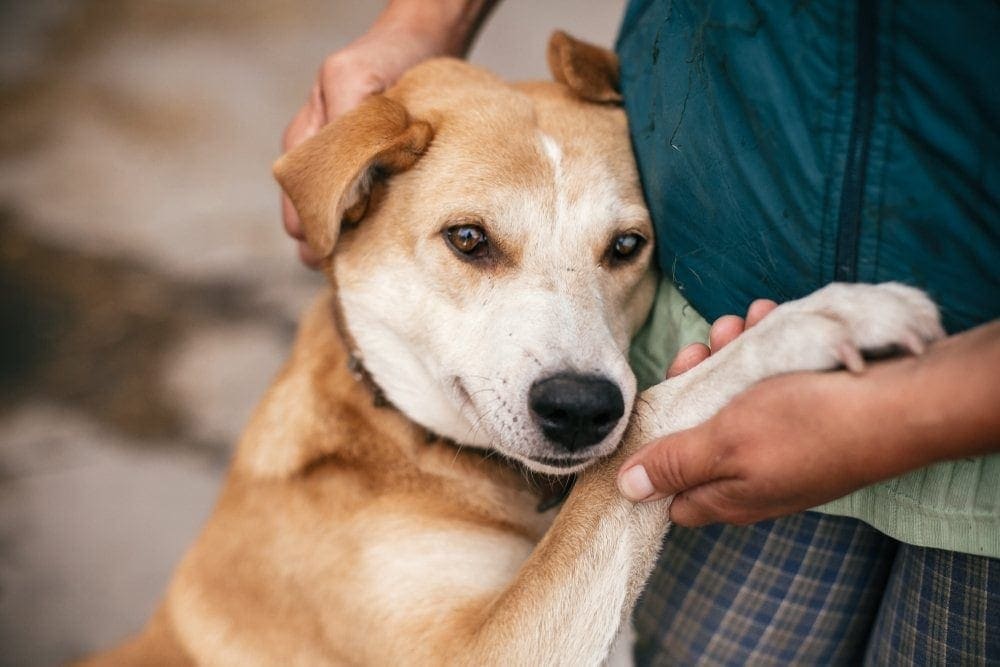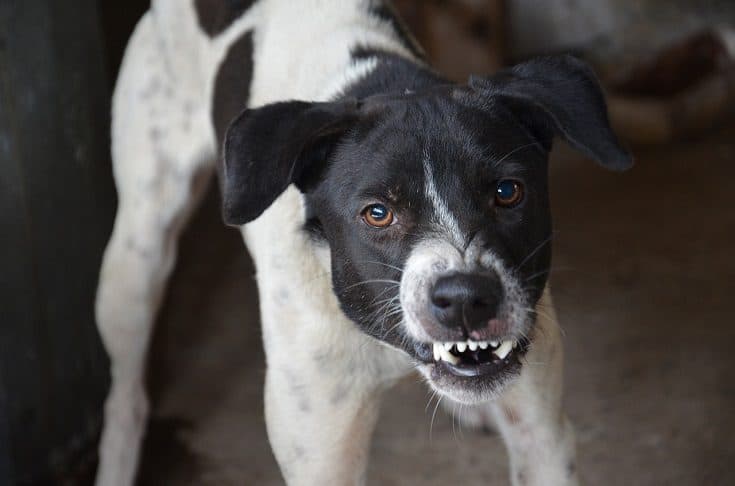Giardia in Cats: Causes, Signs & Treatment (Vet Answer)
Updated on
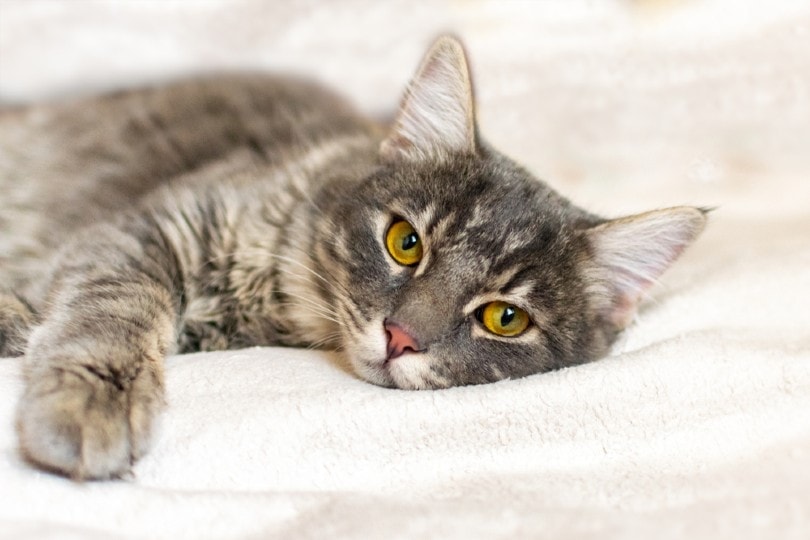
Click to Skip Ahead
Giardia is a protozoan parasite that can cause significant diarrhea and gastrointestinal signs in several species. Giardia duodenalis can infect cats, dogs, and other animals and is highly contagious. Giardia duodenalis 1 is further classified into different assemblages, with assemblage F most often infecting cats.
Giardia can be abundant in the environment, so the chances of your cat encountering Giardia is high if they spend time outdoors. Knowing the signs of illness is important for early recognition and intervention. Below is everything you need to know regarding Giardia and the implications that infection can have on your feline companion.
What Is Giardia?
Giardia is a type of parasite called a protozoan. Protozoans are small, single-celled organisms that cannot be seen by the naked eye.
Giardia can be found throughout the world and are able to survive for long periods of time in the right environment. It will die if exposed to freezing temperatures or direct sunlight. Companion animals become infected with Giardia through fecal-oral contamination. The life cycle of Giardia is unique, and not every stage is infectious. Let’s take a closer look at the life cycle of Giardia so that diagnosis and care can be better understood.
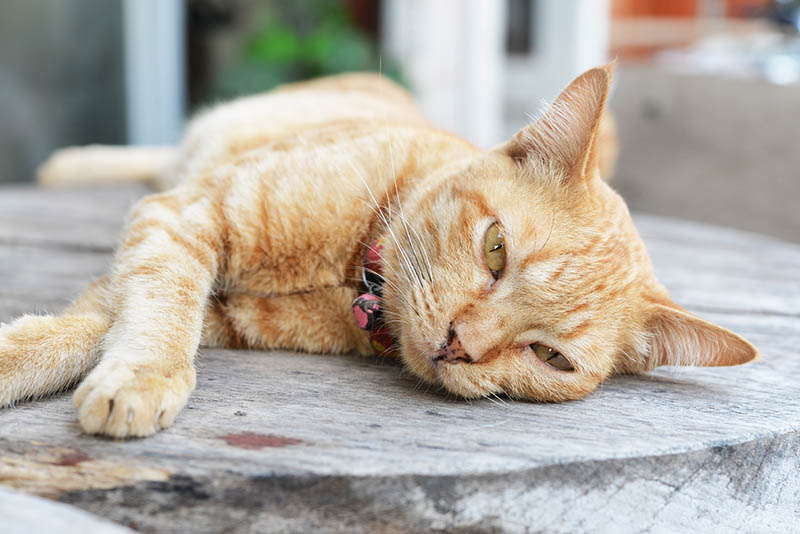
Life Cycle of Giardia
First, a patient develops giardiasis through ingestion of the cystic form of the protozoan. The cyst form of Giardia has a protective covering that shields the protozoan from elements within the environment. As a result, a Giardia cyst can survive for long periods of time in hospitable environments that are typically cool and damp.
Once the cyst has been ingested, it travels through the gastrointestinal tract until it reaches the intestines. During the transit, the hard outer covering of the parasite is broken down. Once the protective covering is degraded, the protozoan has entered the trophozoite stage and connects itself to the lining of the intestines.
After attaching to the intestinal wall, the protozoan feeds and causes damage to the cells of the gastrointestinal tract, which can lead to clinical signs of infection. The trophozoite stage is easily recognizable under the microscope due to the long whip-like tails it possesses called flagella 2. The flagella propel the parasite throughout the intestines. While in the intestinal tract, the protozoan replicates by dividing. As the parasite moves closer to the colon, the trophozoite rolls into a ball and resumes the hard protective cyst covering.
When diarrhea occurs secondary to disruption of the intestinal cells, Giardia organisms are expelled out of the body within the stool either in the cyst or trophozoite form. Once Giardia develops into the cyst form, they are considered infectious and wait to be consumed.
How Is an Infection With Giardia Diagnosed?
Diagnosing giardiasis can be difficult, especially in animals without clinical signs, as the protozoan is not always being shed. Fecal centrifugation tests that are often useful in identifying parasitic worms are not generally useful in identifying Giardia.
ELISA tests have become the standard diagnostic test and can be performed within a veterinary clinic 3. This testing is convenient and provides results within minutes. Confirmatory tests may also be submitted to reference laboratories.
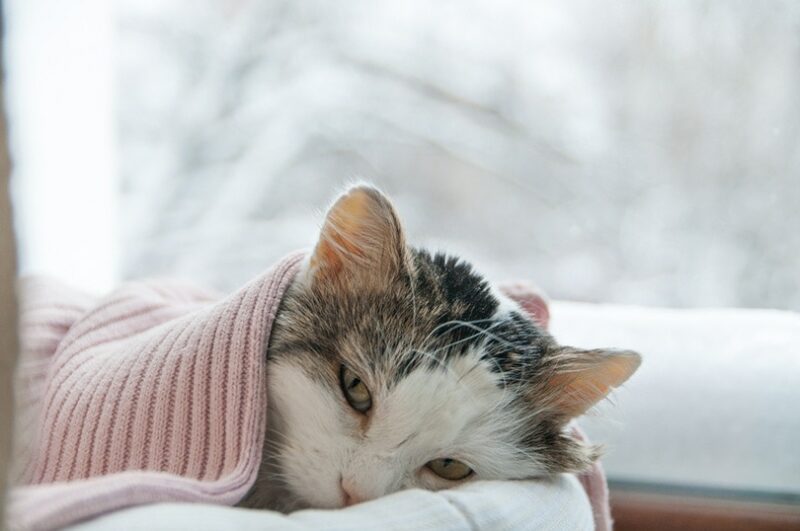
What Are the Signs of Giardia?
Some animals with a low Giardia burden may not show signs of infection. Generally, patients with weakened immune systems are most likely to show clinical signs. Very old, very young, or patients concurrently infected with FIV or FeLV are most likely to be affected.
- Profuse, watery diarrhea
- Intermittent diarrhea
- Dehydration
- Weight loss
- Decreased appetite
- Lethargy
How Do I Care for a Cat With Giardia?
Patient Treatment and Care
Patients who have tested positive for Giardia need to be treated to help minimize the risk of further infection and to resolve clinical signs of illness. There are different medications available to achieve this, which your veterinarian will discuss with you. Two common options are treatment with an antibiotic called metronidazole or the use of a dewormer called fenbendazole (Panacur®).
Giardia cysts, the infectious form of the protozoan, are sticky and can adhere to your cat’s fur. As a result, bathing with special emphasis placed on cleaning the rectal area is recommended at the start of treatment and at the end of treatment. Physically cleaning the rectal region of your cat will help prevent reinfection by physical removal of the cyst.
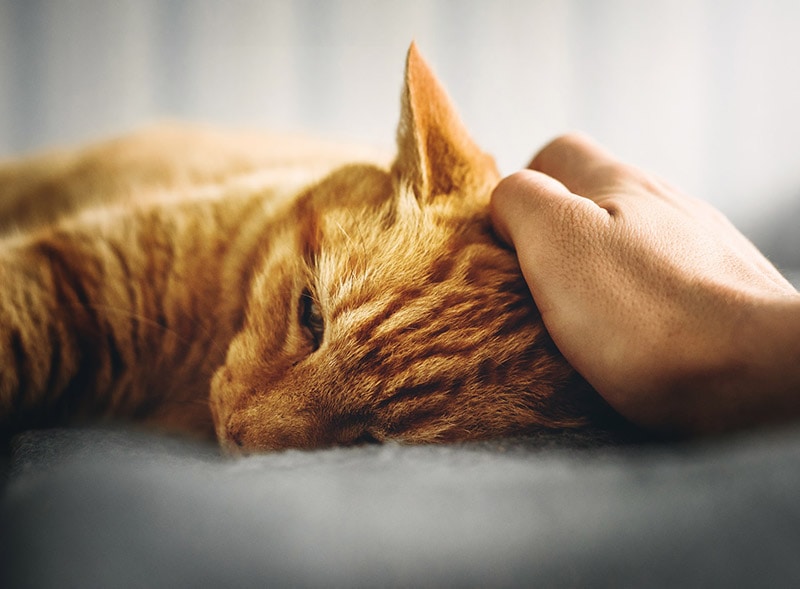
Environmental Decontamination
Treating the environment in which your pet defecates is important. Stool should promptly be disposed of, and appropriate disinfectants should be used. Litterboxes should be cleaned daily. As mentioned previously, dry surfaces and direct sunlight are less hospitable to the organisms and will help prevent infection. Bedding should be thoroughly washed. Ensure that your cat has also been cleaned prior to being introduced back into a cleaned environment.
Is Giardia Zoonotic?
This is a complicated question, but yes. Humans can develop giardiasis; however, the assemblage people are infected with are typically A and B. Although assemblages A and B are not the typical Giardia causing disease in companion animals, companion animals can occasionally carry this assemblage. Giardia duodenalis assemblage F does not appear to cause infection in humans.
As a precaution, good hygiene should be practiced when handling a patient that has been diagnosed with giardiasis. Wash hands frequently after petting your pet, or after cleaning up fecal matter. Always wash your hands prior to eating to further minimize the risk of infection.
Frequently Asked Questions
Can I Develop Giardiasis From My Cat?
Yes, although not common. It is possible that a cat may be harboring assemblages A and B that infect people. The most common feline variety of Giardia, assemblage F, is specific to cats and has not been noted to cause disease in humans.
Can My Cat Be Successfully Treated for Giardia?
Yes! Fortunately, it is a very treatable condition in cats. Your veterinarian will help guide you through treatment recommendations.
Conclusion
Giardia is a gastrointestinal illness caused by a widely distributed protozoan. Zoonotic potential is possible, although not fully understood. Diagnosis can be difficult as not every cat infected with Giardia exhibits clinical signs, and typical fecal tests do not often yield positive results. Giardiasis should be considered in any patient with ongoing or recurring bouts of diarrhea and treatment should be initiated as soon as possible. Due to the infectious and hearty nature of the protozoan, efforts should be made to clean the environment to help prevent future infections.
Featured Image Credit: Ro_ksy, Shutterstock








